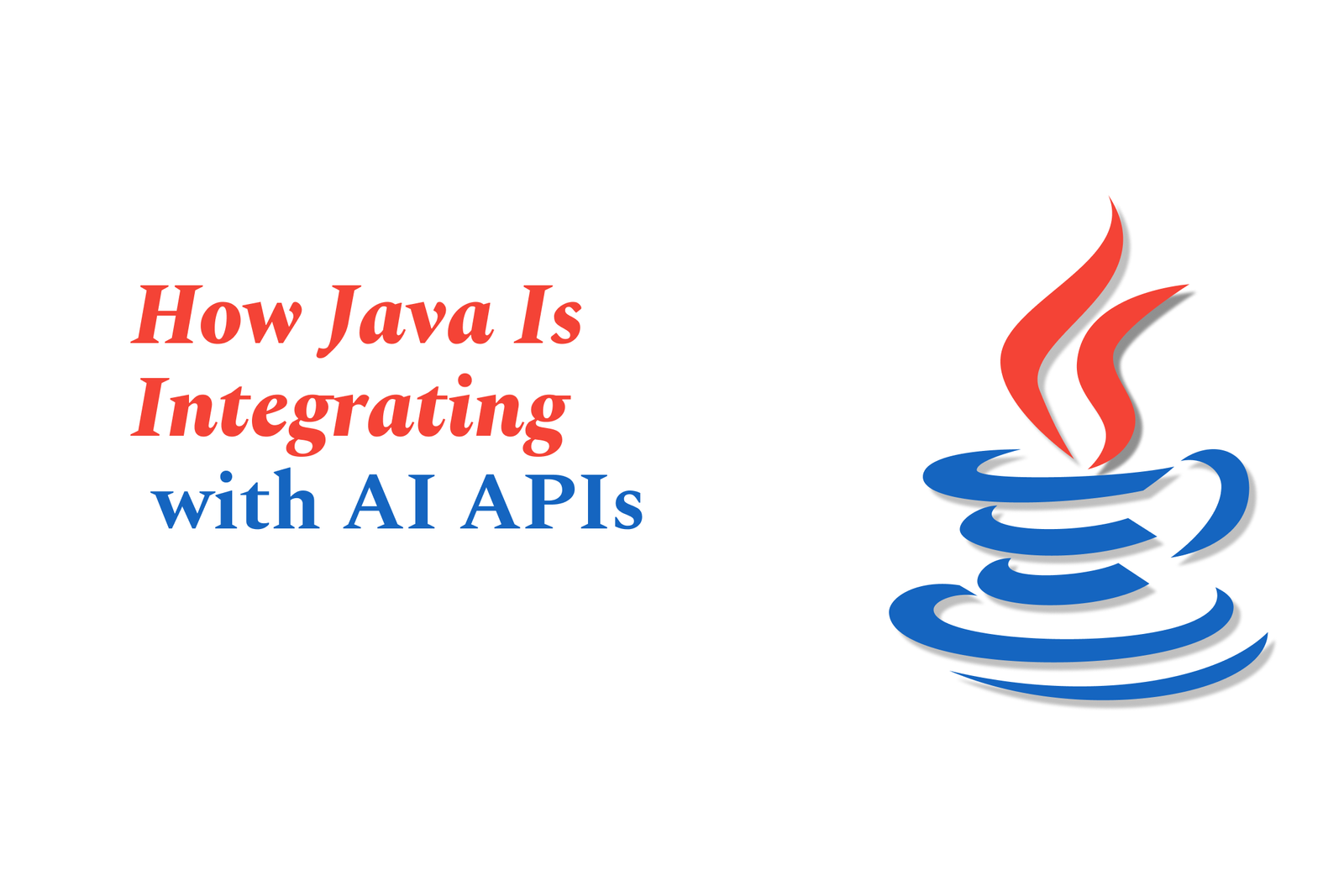How Java Is Integrating with AI APIs
Java is rapidly integrating with AI APIs through libraries like LangChain4j and frameworks such as Spring AI, enabling seamless access to large language models and generative AI services. This empowers developers to build intelligent, AI-driven Java applications efficiently.
How Java Is Integrating with AI APIs
1 ) Emergence of AI in Java Ecosystem
Generative AI, especially Large Language Models (LLMs), has become crucial for enhancing user experience and content creation. The Java ecosystem is evolving rapidly to incorporate AI capabilities, motivated by an increasing demand for intelligent, AI powered applications. This evolution includes the advent of various AI frameworks, libraries, and enterprise solutions like Oracle’s Generative AI platform tailored for cloud environments.
2 ) Prominent Java AI Libraries and Frameworks
LangChain4j:
Developed to fill a void for Java developers seeking LLM integration tools similar to those available in Python and JavaScript. LangChain4j provides a unified API supporting numerous LLM providers and embedding stores, such as OpenAI’s GPT series, Google Gemini, Anthropic Claude, Cohere models, and open source models via Hugging Face. Key features include prompt templating, chat memory management, dynamic function invocation, retrieval augmented generation tools, and AI service abstractions. It also supports text and image models and integrates well with popular Java frameworks like Spring Boot and Quarkus.
Spring AI:
An extension of the Spring ecosystem designed to connect enterprise data and APIs with AI models seamlessly. Spring AI supports all major AI providers, vector databases, and model abstraction, enabling easy switching among AI models. Its API enables models to invoke client side tools and functions dynamically and it integrates natively within Spring applications, making it ideal for enterprise deployments.
3 ) Enterprise AI Solutions
Oracle’s Generative AI service, complemented by its Java SDK, provides a robust platform for building conversational chatbots and other generative AI applications. When combined with LangChain4j, it enhances the accuracy and capabilities of AI driven Java solutions.
4 ) Practical Integration and Use Cases
Developers are leveraging these libraries and frameworks to build sophisticated AI features such as chatbots, dynamic content generation, and contextual understanding within Java applications. Integration with cloud services and support for a broad spectrum of AI models empower enterprises to adopt AI functionalities rapidly.
5 ) Benefits and Outlook
The integration of AI APIs into Java:
Simplifies development with unified access to diverse AI models.
Enhances application intelligence with state of the art generative AI.
Supports enterprise grade scalability and cloud deployment.
Promotes seamless integration into existing Java ecosystems (like Spring).
Overall, Java’s AI integration landscape is growing swiftly, providing developers with powerful tools and services to embed advanced AI capabilities directly into their applications.
https://justacademy.in/news-detail/why-react-native-remains-the-favorite-for-cross-platform-ui
https://justacademy.in/news-detail/new-android-widgets-trends
https://justacademy.in/news-detail/android-instant-apps-developments
https://justacademy.in/news-detail/flutter-devrel-team-news
https://justacademy.in/news-detail/flutter-material-3-custom-components
Related Posts
In 2025, top Angular libraries offer modern, feature-rich components and tools for building dynamic web apps. From powerful data grids to low-code platforms like UI Bakery, these libraries enhance development speed, UI design, and scalability, making them essential for Angular developers.
Migrating from AngularJS to Angular 17 involves gradually upgrading your app by running both frameworks together using tools like ngUpgrade, rewriting components in TypeScript, and adopting Angular’s modern architecture to enhance performance, maintainability, and long-term support.
Angular state management tools help organize and handle app data efficiently, improving scalability and maintainability. Popular options include NgRx for robust, RxJS-based patterns, and newer Signal Store solutions that offer simpler, reactive approaches integrated tightly with Angular’s latest features.
RxJS in Angular empowers developers to manage asynchronous data streams with powerful operators like `forkJoin`, `combineLatest`, and `zip`. Mastering these key operators in 2025 is essential for building efficient, reactive applications that handle complex event sequences seamlessly.
Angular performance optimization in 2025 focuses on improving app speed and responsiveness by using techniques like OnPush change detection, lazy loading, efficient data caching, and AOT compilation. These practices reduce load times, enhance user experience, and ensure scalable, fast Angular applications.
In 2025, Angular remains preferred for large-scale, enterprise apps with its robust, all-in-one framework, while Vue attracts developers seeking simplicity and fast development for smaller projects. Both frameworks excel, with choice driven by project needs and team expertise.
Angular Signals are a new reactive primitive in Angular 16 that enable fine-grained, efficient change detection by automatically tracking dependencies and updating only affected parts of the UI. They simplify state management and boost app performance, revolutionizing Angular's reactivity model.
Angular interview questions to prepare in 2025 focus on core concepts like components, directives, data binding, routing, and dependency injection, along with TypeScript mastery and latest Angular features to ensure strong practical knowledge for building scalable, efficient web applications.
AngularJS reached its official end of support in January 2022, meaning no further updates or security patches. To ensure app security and performance, developers should consider migrating to modern Angular versions or seek third-party long-term support options if immediate migration isn’t possible.
The Angular Roadmap 2025 highlights upcoming features focused on improving developer experience and performance, including zoneless Angular, Signals integration, enhanced Forms, async data handling, improved HMR, and expanded Angular Material/CDK enhancements, driving modern, efficient web app development.










